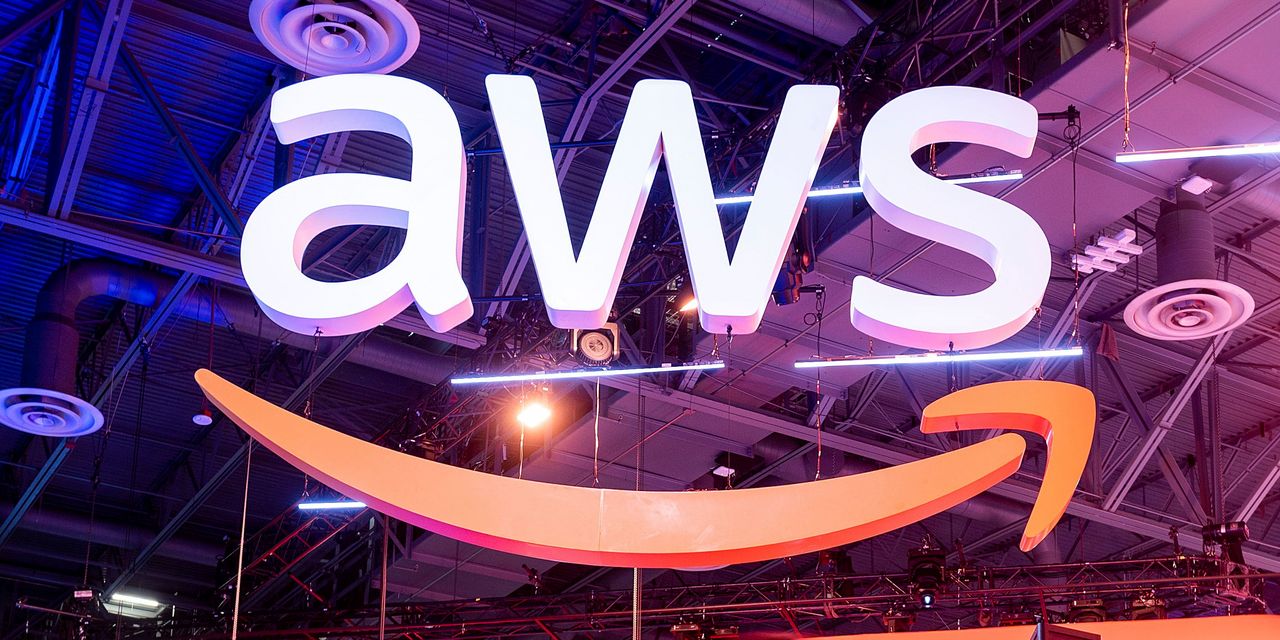
An hourslong outage on Amazon.com Inc.’s AMZN -0.00% cloud-computing unit Tuesday left Roomba vacuum cleaners dormant, streaming services blank and delayed buyers from snapping up Adele presale concert tickets.
Users began reporting issues with Amazon Web Services around 10:45 a.m. EST, according to Downdetector, which tracks website outages. About a half-hour later, the site showed nearly 11,300 reports of outages. The outages appeared to be concentrated in New York, Washington and Chicago, according to Downdetector.
AWS is the largest cloud-computing provider in the U.S. The service allows customers, including many large businesses, to rent computing, storage and network capabilities. Companies and consumers have increasingly come to depend on cloud-computing services as the pandemic has forced them to work from home.
Downdetector showed outages Tuesday for many Amazon services, including streaming service Prime Music, videoconferencing tool Chime and home-security system Ring. Many third-party applications that sit on top of Amazon’s cloud were also receiving outage reports on Downdetector, such as Ticketmaster and streaming services from Walt Disney Co. and Netflix Inc. Some media outlets, including The Wall Street Journal, experienced delayed publishing.
AWS said it began investigating increased error rates and console issues in the US-East-1 region—which is hosted in Northern Virginia and covers cities including Boston, Houston and Chicago—at around 11:20 a.m. EST Tuesday. It said it had identified the root cause of the issue, which was affecting its global console landing page. “We are actively working towards recovery,” Amazon said in an update on its status dashboard.
The company said customers may be able to access consoles from other regions. The management console is a web interface that allows users to manage their AWS cloud-computing services.
By 5 p.m., outage reports on Downdetector had dipped below 3,500.
Amazon didn’t respond to questions about how many users were affected by the outage or how long it is expected to continue.
The company’s shares rose 2.8% to end the day at $3,523.29, in line with the broader market.
Shuman Ghosemajumder, global head of artificial intelligence at F5 Inc., said the console issue could impact customers differently. Many sites could generally continue to operate as they were configured, he said, but advanced customers rely on access to the management console, “constantly making automatic changes to their infrastructure configuration.”
In preparing for the next outage, customers need to understand the difference, according to Mr. Ghosemajumder.
“AWS’s infrastructure may provide the ‘body’ of a website or application, but the AWS management console provides access to the ‘brain,’” he said. “You should treat that ‘brain’ as an additional point of failure to monitor, and consider how to create redundant mechanisms for it.”
Investing platform Public.com said the widespread AWS outage had made its app unavailable. “We understand that this is frustrating or even stressful for our members and will do all we can to keep you informed as AWS corrects the situation,” the company said in a tweet.
Public.com user John Taylor said he lost nearly $3,000 because he couldn’t sell stock on the platform due to the AWS outage. The 45-year-old Chicago resident said he recently lost his travel-industry job and began day trading to help pay for his three daughters’ holiday gifts.
“I’m definitely upset,” said Mr. Taylor said. “Why is there no backup plan? This is the second time this has happened.”
A Public.com spokeswoman said the company was working closely with AWS to ensure a speedy recovery. “We’ve notified customers through a number of channels and are committed to supporting them,” she said.
Outages in cloud services aren’t uncommon, but they have become more noticeable as more companies have migrated to these major cloud platforms over the past few years, said Sid Nag, vice president at research firm Gartner Inc. He estimates a major outage happens around once a quarter every year.
The top five players, with Amazon by far in the lead, own around 90% of the cloud infrastructure market, he said.
“These guys have almost become too big to fail,” said Mr. Nag. “Large parts of our day-to-day lives are predicated on activities that run on these cloud platforms.”
Some companies have begun trying to build across multiple clouds to build redundancy and reduce risks of outages. But considering there are so few cloud platforms to choose from, it is inevitable that products built on the cloud will experience outages at some point, Mr. Nag said.
Sam Hulick, chief executive of ReelCrafter, a Chicago-based platform that allows audio and video artists to create portfolios, said Tuesday’s AWS outage affected part of the site.
Mr. Hulick, who said ReelCrafter has used AWS since launching in 2016, said Amazon tends to promptly resolve outages but fails to quickly communicate the initial impact to their customers. “I shouldn’t have to go to Twitter to find out what’s going on,” he said.
Amazon didn’t immediately respond to a request for comment about its communications with customers.
Amazon has long been the leader in the business of renting out cloud-computing infrastructure. Microsoft Corp. as well as Alphabet Inc.’s Google are also major providers of cloud services.
Other tech giants have also had to deal with outages in recent months. In early October, Facebook Inc.’s services went offline for hours in an outage that disrupted access for users and businesses around the world. The outage affected its core platforms and apps including WhatsApp, Instagram, and Facebook Messenger. Facebook said the problem was due to networking issues.
—Tom Loftus contributed to this article.
Write to Omar Abdel-Baqui at [email protected] and Aaron Tilley at [email protected]
Copyright ©2021 Dow Jones & Company, Inc. All Rights Reserved. 87990cbe856818d5eddac44c7b1cdeb8








